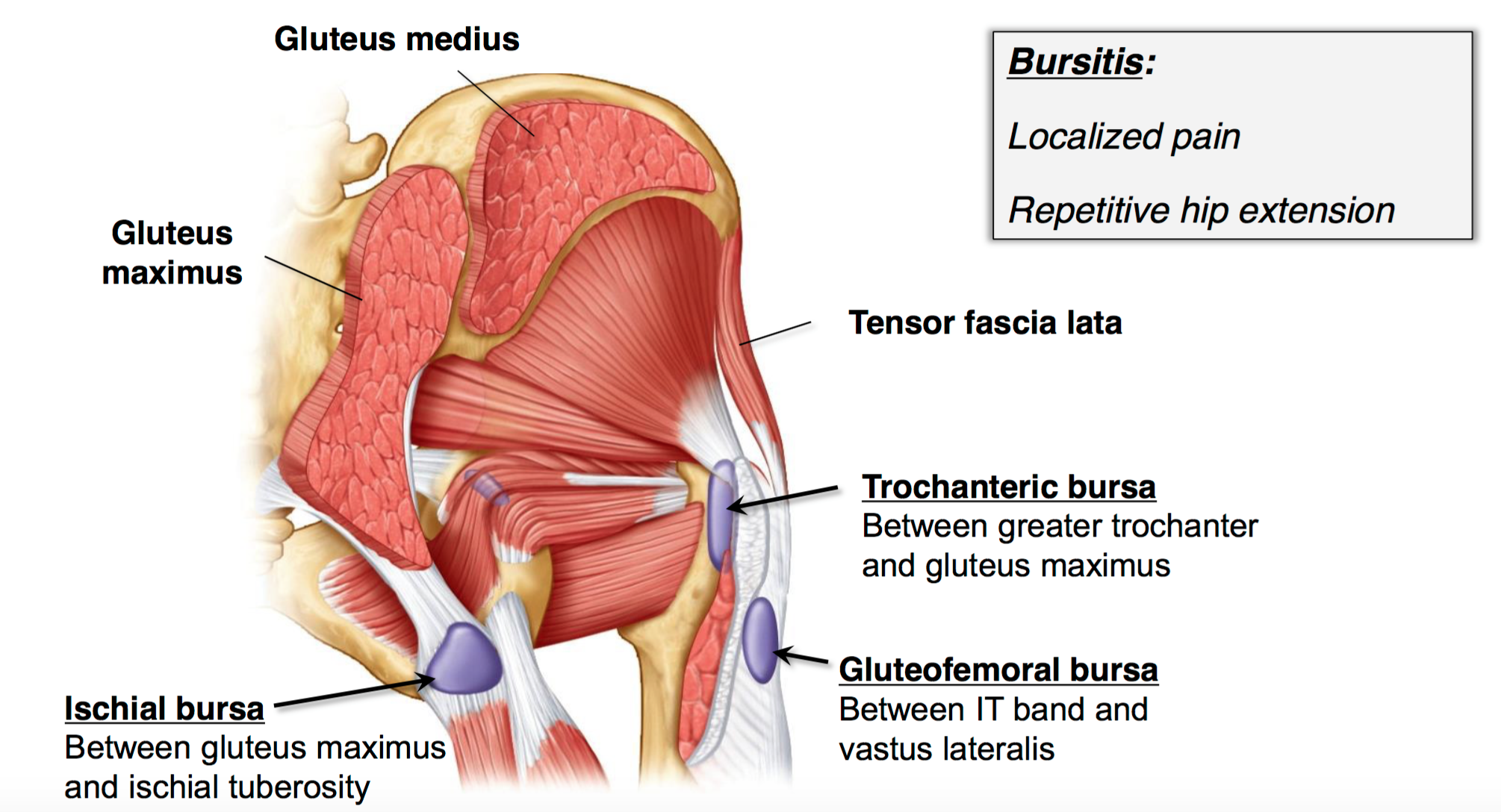I watched your YouTube video about ischial bursitis symptoms and “SITS” bone pain. What you described is exactly what I have been experiencing for the past five months. I have been dealing with lower back discomfort for over a year, but the ischial pain started mid-summer and I cannot exactly pinpoint the cause. I am not an avid runner, nor do I exercise nearly as much as I should – my height / weight is 5’10” / 158 – 162 lbs.
My doctor originally thought the pain could be ischial bursitis and I had an MRI in August that showed slight thinning of one disc and some transitional anatomy. I proceeded with physical therapy, but the therapist thought it was more sciatic and the exercises he had me doing hurt.
My job has me sitting more often than not, so a standing desk was installed that I use when my discomfort and pain flares. I went from driving an Accord to an Odyssey and then back to a sedan this past summer (July). Returning to a low sitting position was uncomfortable and I recently traded for a new SUV (Mazda CX-5) to get back to an upright sitting position. The only thing I now notice is that the driver’s seat cushion is very firm, whereas the Odyssey seat cushion is softer (more pronounced lumbar though).
Given that I am across the country, I suppose my questions are as such:
•What exercises should I be doing to strengthen my back and alleviate the pain / discomfort in my SITS bones?
•What type of seating position is best, particularly for driving – firm or soft? I love to drive and the SITS bone pain has robbed me of this joy. I now dread car trips because of how I anticipate it will make me feel upon reaching my destination.
Thanks in advance for any help or advice you can lend.
Hello and thank you for your questions. While pain in the SITS bone (Ischial Tuberosity) can be Ischial Bursitis it can also be a number of other conditions that must be ruled out. This is sometimes easier said than done but with practical orthopedic testing, a proper history and imaging we can certainly narrow it down and help you on your path to recovery. I will also try to answer all of your questions at the same time.
The top conditions that can affect the region you described are
1. A lumbar disc that is either swollen, protruded or herniated can put pressure on nerves and result in pain that is far away from the actual site of compression. In your case they have suggested that you may have sciatica. Sciatica is defined as compression of the Sciatic nerve as it passes behind the L5-S1 disc and causes pain that can radiate through the gluteal region, down the back of your thing and into your foot. From your description and what you have said the MRI shows seems to eliminate this as an option despite what your physical therapist says.
2. Piriformis Syndrome is a condition whereby your Piriformis muscle found deep in the gluteal region spasms and causes local irritation to the Sciatic nerve as it passes under or between the Piriformis muscle. It may cause pain while sitting. The symptoms from this condition are usually similar to Sciatica which again, you are not describing.
3.Gluteus Medius Syndrome is caused by trigger points in the Gluteus Medius muscle and can cause local pain in the Gluteal region without radiation of pain into your thigh, calf or foot. It may cause pain while sitting. This condition is often misdiagnosed as Sciatica.
4.High Hamstring Tendonopathy can cause pain in and around the SITS bone and results from degeneration of the hamstring attachment on the SITS bone. This condition would not cause radiation of pain and would hurt sitting.
5.Ischial Bursitis would cause pain in the SITS bone, would hurt sitting and would not cause radiation of pain down the thigh, calf or into your foot. It would be somewhat relieved by standing which you appear to be describing.
It is important to understand that MRI technology is flawed and often does not show the injury a patient is suffering from. In my office we have a saying “Treat the patient not their MRI”. In your case it might be prudent to request a cortisone injection into your Ischial Bursa. If the pain is relieved then the injection was diagnostic as well as therapeutic. As far as exercises go….well a bursa is not a muscle so you do not strengthen it. You may be able to perform some stretches that could help. A foam roller will typically worsen the issue as inflamed Bursa do not respond well to direct pressure.
I know you mentioned you are across the country but I can offer you a phone consultation. The cost for this is $237 and during our call I will walk you through a series of provocative tests to further narrow down what you are suffering from. Following that I will email you a specific treatment plan to help you quicken your road to recovery. If you would like this option please call 858-268-8525 or email Drallen@sdri.net to schedule it. Make sure to tell my office we have communicated via email and that you want a phone consultation. If you require further information email info@sdri.net
Here is a link to my webpage on Ischial Bursitis please let me know if you have any further questions Ischial Bursitis Do I have it?
The medical information on this site is provided as an information resource only, and is not to be used or relied on for any diagnostic or treatment purposes. This information is not intended to be patient education, does not create any patient-physician relationship, and should not be used as a substitute for professional diagnosis and treatment.


Leave A Comment